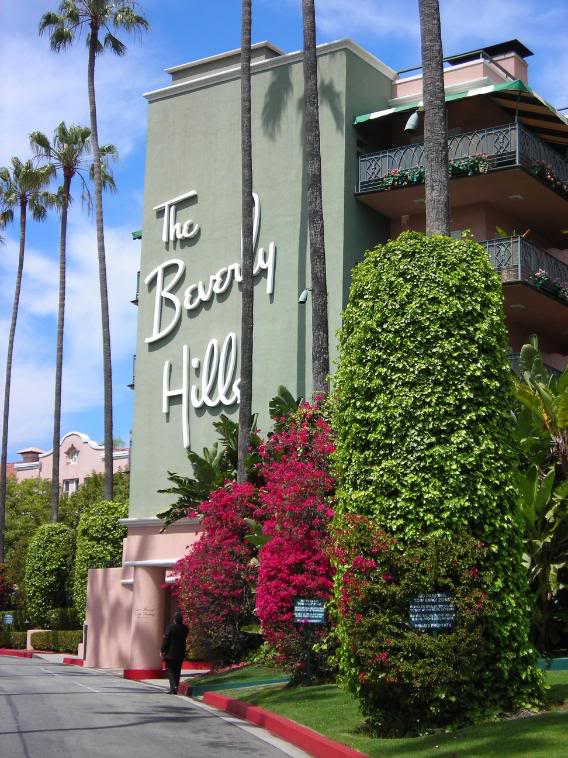
The year was 1958, and with both brothers virtually out of work, the little West Coast contingent of our family was looking at some pretty lean times. My bachelor brother Gary dealt with his situation by sharing an apartment in Hollywood with three other guys, while I was supporting a wife, two kids and a house with a mortgage in Bel Air.

We got calls one day from our father, Gilbert Nathanson, telling us that he had invested some money in a new retail adventure with his brother Milton. Dad thought that there might be a job opportunity for one or both of us, and that we could expect to hear from Uncle Milt, who was in LA at the time on his company, Broil Quick’s, business. The call came the next day and we met with Milton poolside at his Beverly Hills Hotel Cabana. He introduced us to his gorgeous companion, (There was always a gorgeous companion) and suggested we join them for lunch.
Over lunch he explained that they, he and my father, were acquiring several concessions in a new discount house which was opening in what had formerly been a traditional department store near downtown Los Angeles. He believed it would be a great opportunity for us to learn a new business. Actually Milton had another partner in the deal and, living in New York as he was, our involvement would “help protect the family’s investment”. Considering that my brother was out of work, and I wasn’t even scraping by, there wasn’t much hesitation on our parts, and besides they were going to pay us each $100 a week… LITTLE DID WE KNOW WHAT WE WERE GETTING INTO!

The location of the new venture was south of downtown at fifty first and Broadway in an old-line family owned department store named Kay’s. The plan was to convert the store into a discount house wherein the Kay’s family would participate with new investors in the operation of the TV and home Appliance departments. The other departments would be leased to independent concessionaires.
To manage the new store, the investors brought in a man named Sam Nassi, who had earned a reputation as one of the country’s most aggressive discount house operators. Prior to joining that team, Sam had been running the White Front stores in Los Angeles. Sam was given a big piece of the business to make the switch. Kay’s would be going in direct competition with White Front, whose original store was less than a mile away. Coincidentally, Sam while at White Front had been one of Uncle Milton’s biggest broiler customers, and it was Sam who convinced him to take on the concessions at Kay’s.
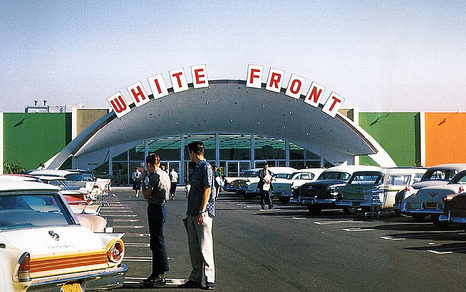
The other partner in Milton’s deal, a man named Gene Roberts, was also a friend of Sam and a big hitter in the ladies fashion business. He, in turn, brought in his brother and his brother-in-law as participants on his end. Counting my brother and me, that’s already seven people. They must have figured they were going to make a killing… YEAH, UH HUH, DON’T BET ON IT!
Our concessions included men’s and women’s clothing and baby furniture which were already existing departments at Kay’s. We brought in and set up new phonograph record and liquor departments.
One of the conditions of our deal was the requirement that we purchase all existing men’s and women’s clothing presently in the store’s inventory. Seemed like a good deal at the time. Our cost for this inventory, some of which dated back 50 years, was only 30% of the wholesale price in effect at its original purchase. Taking into account inflation, we were paying at most 10% in 1958 dollars. We could price the inventory at double our cost, give the customer a tremendous bargain and still make a substantial profit… OR SO WE THOUGHT.
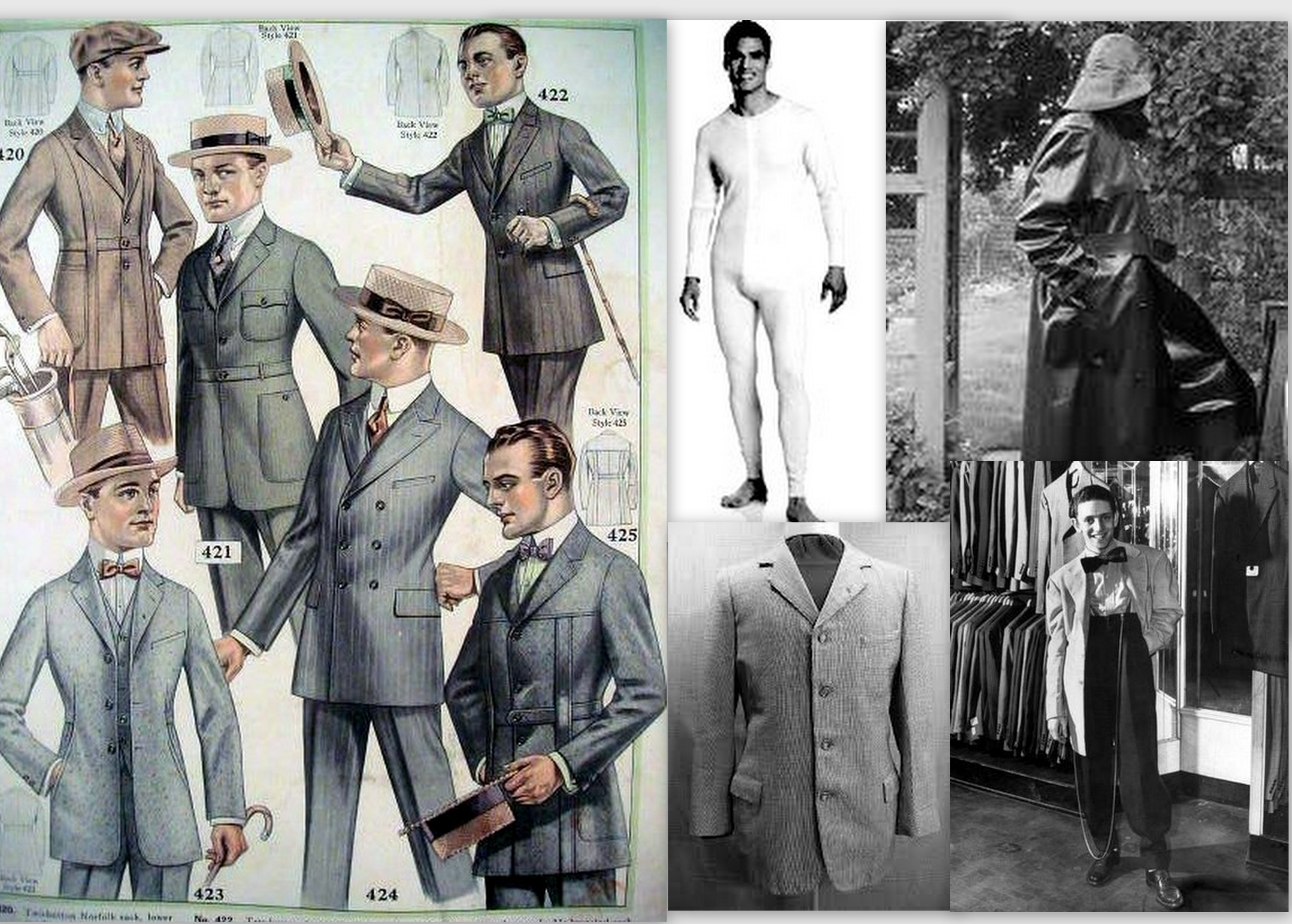
In short time we discovered that Kay’s ancient inventory itself was to be our challenge. The menswear included everything from 100 or more pairs of long underwear to old-fashioned sou’wester rain gear, hats and boots included. Though men’s suits and shirt styles hadn’t changed much over the years, we inherited a couple dozen four-button belt-in-the-back sport coats that had been popular in the 1930s.
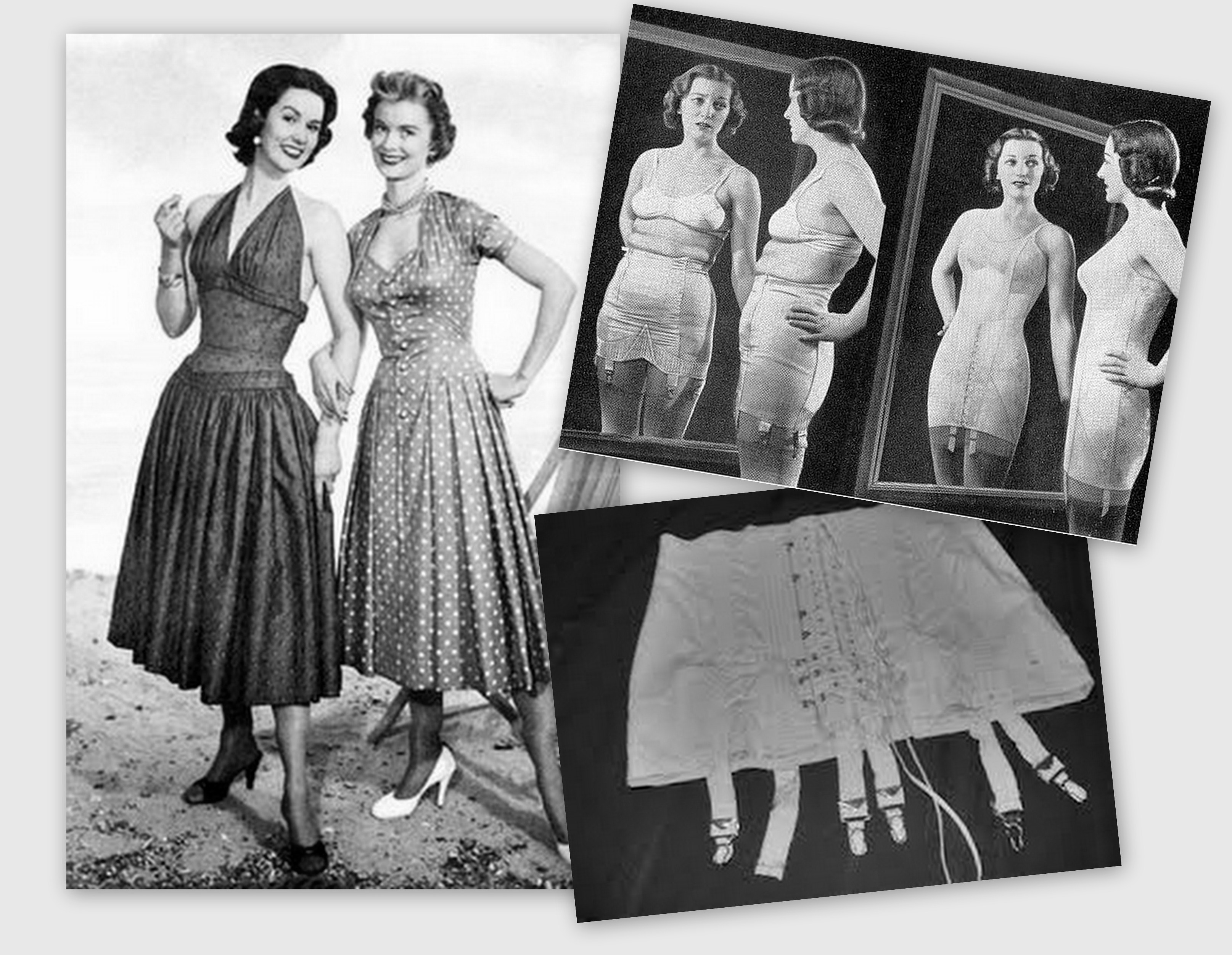
Gene Roberts brought in a lady to manage the women’s department. You name the fashion year, and she inherited it. However, she wasn’t too concerned about dress styles which were all over the place, because vintage clothing was highly sought after by younger women as it still is today. On the other hand, she had to deal with a mixed bag inventory of women’s shoes and hundreds of old fashioned corsets and rubber panty girdles. Unfortunately rubber panty girdles don’t age well, and she got a lot of returns.
The biggest surprise in the clothing departments were the hats, men’s and women’s of all types and styles. Hats had long since disappeared from the sales floor and were discovered in Kay’s warehouse along with heavy winter coats and snow boots. We couldn’t give the women’s hats away, but men’s hats were hot. We immediately reverted to the original sticker price and limited sales to one per customer. Still, we sold out in three days. As a matter of fact we started a whole new fad in that part of town.

Pricing the rest of the clothing was simple. Just about everything that had a ticket on it was 50% off regardless of the date of the ticket. As for the older clothing that no longer bore or never had a ticket, the Roberts boys simply told us to sell it at 50% of the original cost. Those numbers weren’t easy to find. We had to dig through a lot of old records, so when in doubt we just invented a number.
The demographic at fifty first and Broadway had changed considerably over the years. The neighborhood in the 1950s was populated heavily by the African American community. Whites had moved west and the Hispanics had settled in the Boyle Heights area of East LA, where still remained a few old Jewish families.
Kay’s was one of the few remaining credit department stores. Their clientele enjoyed the luxury of old-fashioned charge accounts and Christmas lay-a-ways. Every Saturday the mothers and grandmothers would line up at the cashiers’ windows to make a payment against their ever-existing balances, after which they went shopping.
Obviously there was no room for luxuries like credit or lay-a-ways in a discount store operation. To everyone’s surprise however, many of those old customers actually continued to come in every Saturday to make a payment against their credit balances even though neither the original owners nor the present operators had any realistic means of enforcing collection.
Unlike clothing, the record and liquor concessions were new to Kay’s. Fortunately my friend, Joe Smith, introduced me to a man who was what the wholesale record business referred to as a “Rack Jobber”. He agreed to put in new LPs and 45s (long playing records and singles) on consignment, and he sold us hundreds of so called “cut outs”, which were actually returned records, at close to nothing.
Because this was primarily a black neighborhood, he loaded our inventory with Oscar Peterson, Sarah Vaugn, Dakota Statin, Ahmad Jamal, John Coltrane, Art Tatum, Lester Young and of course Miles Davis, Ella Fitzgerald, Dinah Washington and Carmen McCrae. Other popular sellers at the time were Arthur Lyman and Cal Jader instrumentals. Every 33 1/3 album sold for $2.98. A 45 rpm single was priced at 50 cents later marked down to 25 cents. We did a great record business with nothing in the way of risk, because we paid only for the music we sold.
The liquor department was another matter. Young’s Market, our distributor, didn’t work on a consignment basis. What we bought we owned. Unfortunately, we knew nothing about the liquor business. One of our partners came up with the idea of having some of our liquor bottled for us under a private label, which we could afford to sell at a discount. They dubbed the brand “John Roberts”. There was John Roberts Bourbon, John Roberts Scotch and John Roberts Gin. The name really didn’t fit for our private label vodka, so we came up with “Karamazov” after the Russian brothers of the same name.

Boy did we not know our neighborhood and its clientele. A little research would have told us that the African American community was, and still is, very brand conscious. They buy only the best.
And as for the competition, there were liquor stores all up and down Broadway. Our liquor department at Kay’s was a BUST.
The grand opening of the New Kay’s Discount House was a Sam Nassi classic. He had hired away some of White Front’s top merchandisers including its one-man advertising department, John Embry. John is the guy who originated those big black and white double truck newspaper ads with the bomb bursts where the bargains literally exploded off the page.

Our Grand Opening was on a Saturday in the fall. The local radio and TV stations had begun promoting the new discount store the week before. There were klieg beams lighting up the sky. People from all over the city were lined up all night for the store’s opening at 6:00 AM. There were a half-dozen police cars and probably 20 uniformed officers there on that first Saturday to control the crowds and keep the peace.
Because the fire marshals set a capacity limit on the building only a set number of shoppers were allowed in the store at any one time. One person couldn’t get in until another customer left. The lines went clear around the block. You could understand why. Everything in the store was priced at what was normally below cost. Who needed ‘loss leaders’? Everything in the store was a ‘loss leader’.

The other retailers in town were screaming, and the manufacturers were crying foul. However, the Federal Courts had thrown out the fair trade laws and disallowed price controls. The big chain department stores like the May Company and the Broadway threatened their suppliers, but what could they do? The day the store opened, the sales manager for Jockey came in and bought every pair of briefs and undershirt we had in the store. No big deal; Gene Roberts had a load of men’s underwear delivered from Munsingwear the next day.

We had two banks of four cash registers in our clothing department which was on the main floor of the building. The mobs were four feet deep around those cashiers. In fact there was not enough room in the cash registers for all the paper money that first Saturday. My wife, Elayne and her girlfriend Soni took shifts at those cash registers. They were aghast when Gene or his brother broke through the crowd, took large wads of bills out of the registers and stuffed them in their pockets to “make space,” so they said. She’s sure the partnership never saw that money.
“Why didn’t you take any money?” she asked me.
“I wouldn’t do that,” said I, “Besides, I was busy selling suits.”
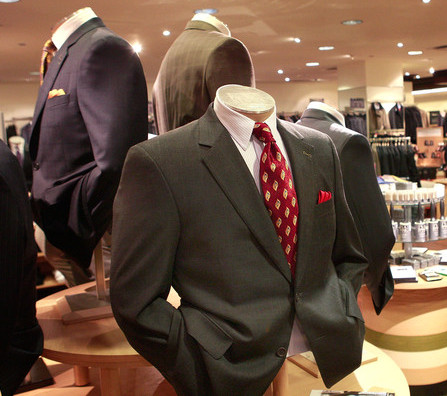
Kay’s men’s suit, slack and sport coat department was its pride and joy. They featured major brand lines such as Hickey Freeman, Groshire and Hart, Schaffner and Marks. Their inventory on the floor was impressive and quite deep in styles, sizes, colors and materials. What they didn’t have on the floor they backed up in the storerooms. Everything was half price. HOW COULD WE MISS?
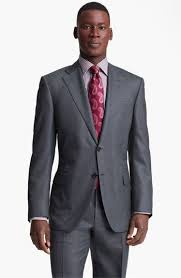
Like their liquor, the local clientele insisted on the best and Kay’s had it in its very impressive men’s-ready-to-wear department. We had what I would call a demographic problem however. Whereas slacks and sport coats are sized and purchased individually; ready-to-wear suits are a two-piece purchase. The matching pant legs come uncut and can be cuffed at whatever length the customer requires. However, the pant waists are something else. Someone many years ago decided that the average man with size 42 regular shoulders should have a size 36 waistline, and a man who wears a size 41 jacket should wear a size 34 pants, a size 38, size 32 pants, etc. That’s the way men’s ready-to-wear suits are shipped from the factory.
Now it is a fairly simple job to alter the waist of a pair of pants by taking them in as much as an inch or two or even letting them out somewhat to make the right fit. Well while those alterations may work in Beverly Hills or West LA, they didn’t and still don’t work in Kay’s part of town.

Mothers would drag their grown sons into the store to buy two or three suits. The problem was that a boy from that neighborhood might have perfect size 42 shoulders, but he could have a size 30 waist to go with them. That would mean taking the pants in as much as six inches. Regardless of suit size or shape the waist problem still existed.

Now the reader has to imagine himself or herself on the floor those first few weeks at Kay’s in the men’s suit department. There were three of us salesmen on the floor; my brother, his buddy Steve Radjic and myself. The store’s tailor had stayed on, but he became hysterical and quit after three days.
Customers were pulling suits off the racks, trying on jackets and pants and crowding into the dressing rooms. Mothers were crying that the pants were too big. Of course they were; think of the demographic. So what did the three journeymen menswear salesmen do? Yes… I’m sure the reader can get the picture. We simply took a size 30 pair of pants away from its size 36 suit coat, or whatever it took to make the sale, and boy did we do business.
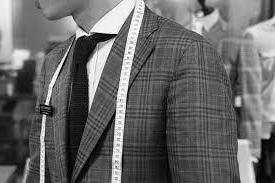
The consequences of this accommodation hit us a week or two later when our inventory consisted of a lot of size 34 and 36 suit coats, and a lot of size 40 and 42 pants. Obviously the imbalance existed in larger as well as smaller sizes. What could we do but try and pair them up? When I had a customer who was ready to be fitted I would call “Tailor!” and my brother would throw a tape measure around his neck, grab some chalk, mark the cuffs for length and the draw a big ‘V’ down the back seam of a pair of matching but oversized slacks. The slacks were now sent up to the tailor shop to Steve who had replaced the tailor who went AWOL. Steve, of course, had his limitations which were confined to adjusting the length of the cuffs and cutting that big ‘V’ out of the rear seam in the slacks and stitching it back together.
Steve was getting pretty good at his newfound profession, however the mothers were complaining. “Why are the pleats in the pants angled off to the sides and the rear pockets so close together?”
We tried explaining our problem, but they had no sympathy. Invariably we took them over to the slack table and told them to find a pair that fits and comes close to matching the suit coat; no charge. Ultimately we broke up all the unmatched suits, sold the pants as slacks and the jackets as sport coats. We discussed the problem with the Roberts brothers, who told us we would never find a ready-to-wear suit manufacturer who would pair jackets and slacks to accommodate the demographic in Kay’s neighborhood.

The women’s ready-to-wear department had its own problems. They had to deal with an inventory of ladies’ shoes. Shoes, of course, require the assistance of a salesperson, they do not sell themselves like other impulse-type merchandise. Unfortunately we had only one saleslady in the shoe department so lady’s shoes was almost self-service. Also, only a limited supply of shoe sizes and styles are displayed in a showroom. Most of the shoe inventory is usually back in the store room. It was chaos. Ladies’ shoes in and out of boxes were scattered everywhere. The showroom and the storeroom were in shambles. After one week, we decided to go out of the shoe business. I think we ended up selling the entire women’s shoe inventory to some peddler by the pound.
As for any other merchandise in the ladies’ department which, like shoes required sales help, we decided to go self-service and price the goods to sell on a no-return basis.
The other concessionaires in the store had no such problems. Jewelry, carpets and drapes were all new departments leased to professionals, most of whom owned and operated similar businesses on the outside. They would see the chaos going on in our departments and just shake their heads.
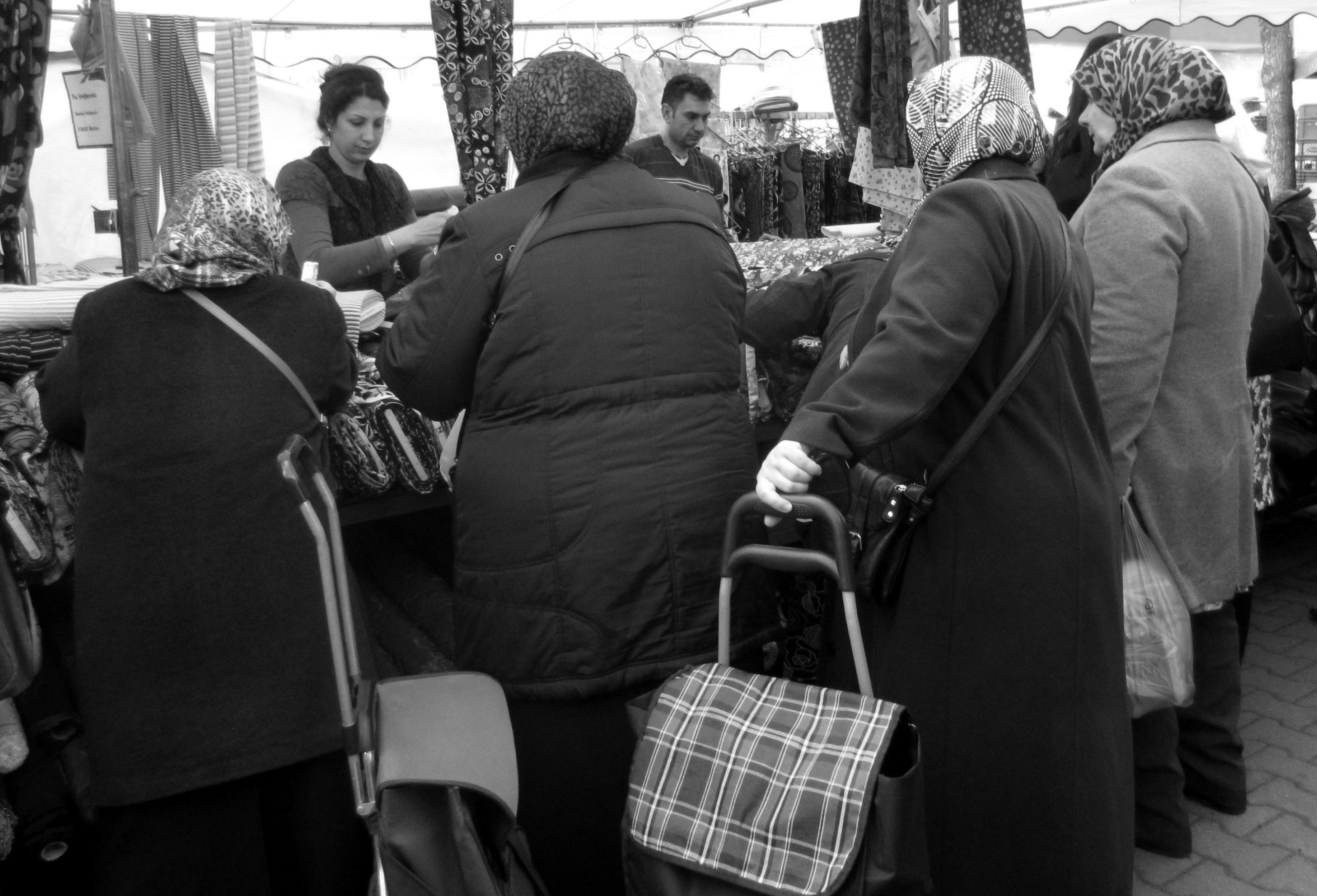
We ran into another problem in both men’s as well as women’s clothing. Now I don’t want to cast aspersions on any particular ethnic group but during those early hectic days and continuing for some time thereafter shoplifters had a ball. Gypsy mothers were our biggest culprits. With their full blouses and long skirts, most anything in our departments was fair game.
As men, there was no way we could inspect a bulge we might detect under one of those long skirts or underneath a lady’s coat or jacket. All we could do was alert the guard at the door, who would summon a sales girl, who would in turn invite the suspect customer into a dressing room. The usual result was screams, threats and curses that could be heard all over the store.
I personally confronted a woman who was walking toward the exit with a pant leg dragging on the floor from under her full skirt. As it turned out she had three men’s suits wrapped around her hips under that skirt. Could we call a cop? No. The law at that time stated that discovery of a theft while the shoplifter was in the store was not considered a crime warranting an arrest. The thief had to be off-premises when caught with the goods. Of course it isn’t fair to single out the Gypsy community. There were ‘suspects’ of other ethnic heritages. To my recollection however, few if any shoplifting arrests and convictions ever took place in my short and happy life at Kay’s Discount Store.
The TV, Hi Fi and appliance departments remained in the hands of Sam and his partners, who used coop advertising allowances from the manufacturers to fund the store’s newspaper and TV advertising. Kay’s existing TV and appliance inventory went quickly as one would expect, thanks to their lower than low prices.
White Front, on the other hand, was a fierce competitor. It’s owner, Harry Blackman, harbored no love for Sam and the rest of his deserters who had turned into competitors. He began matching or beating Kay’s prices and he heavied up on his TV and newspaper ads. In time, when the original liquidation priced inventory at Kay’s was sold off, new merchandise had to be brought in, paid for and priced accordingly. Predictably business at Kay’s began to level off.
Meanwhile, as to our concessions: What with the diminished store traffic my brother and I had to cut back on our overhead and reduce our staff. The ‘New Kay’s’ had lost its pizazz. The Roberts boys disappeared and I spent less time at the store and more time in the office where Burt and I had started an FM radio magazine and were building our first radio station in Long Beach.
Kay’s Discount Store closed a year after it opened. Our little business and its concessions at the store went into bankruptcy. It was very humiliating. We leased some retail space in an empty store across the street on Broadway and another in Santa Monica, so we could sell off what we had left over for the benefit of our creditors. It was a very sad period for me and my brother and an embarrassment for our father and Uncle Milton. Call it a painful learning experience.
EPILOGUE:
Milt Nathanson continued to see to it that every family in America owned a counter-top broiler. He left Broil Quick and launched a competing product he called Roto Broil. You could always find him with a beautiful companion in his cabana at the Beverly Hills Hotel pool whenever he came to Los Angeles.
My brother Gary joined Merril Lynch, returned to Minneapolis, got married and became a stock broker. He moved back to Los Angeles several years later, married again and with his partners built a successful real estate development business.
Steve Radjic went into the newspaper distribution business. He later built a successful School Supply Company. He is retired and lives in Orange County.
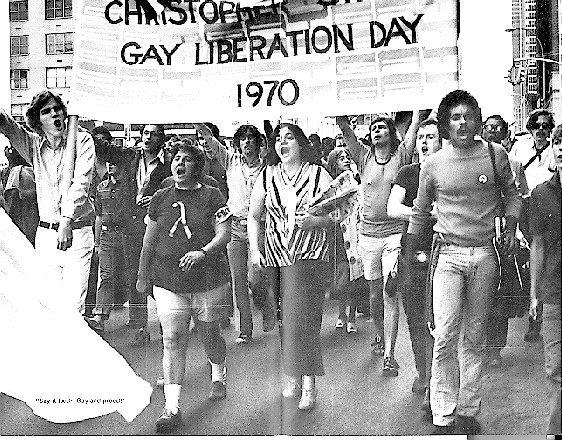
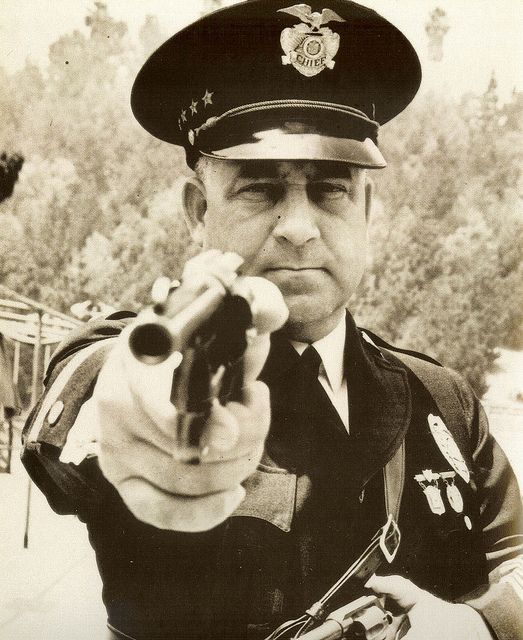
John Embry left White Front and became a freelance commercial artist. He was the original Art Director of FM & Fine Arts Guide, the magazine Burt and I published for music lovers. John came out of the closet … he was never really in. He launched a magazine for gay body builders and was co-promoter of the infamous 1970 Gay and Lesbian Parade on Santa Monica Boulevard, the city’s first gay coming-out party. The parade was raided by armed Los Angeles Swat policemen, helicopters and all. John and his co-promoter were actually jailed briefly by then Police Chief, Ed Davis.
Shortly thereafter, John moved to San Francisco where he continued to publish newspapers and magazines for the Gay and Lesbian community. I lost contact with John during the height of the AIDS epidemic. I can only assume the worst.
Sam Nassi went back to White Front and took his ‘boys’ with him. He continued to do big things with that chain until several years later when he went into the liquidation business on his own and became very successful.
Sam and I remained good friends over the years. When our house burned down in November of 1961, during the Bel Air Fire (which is another story) Elayne and I lost everything we owned and had to move into a furnished rental in Malibu. A year or so later we bought a lot across the street in Malibu Colony and built a home of our own with the help of a disaster loan from the U.S. Government.
I got a call one day from Sam Nassi when he was still running White Front. “Why don’t you and Elayne come down to our main store,” suggested Sam. “You’re going to need all kinds of appliances and other stuff for your new place.” We accepted his invitation.
Every appliance for our new kitchen large and small came from White Front, as did our washing machine and dryer, our TVs, stereos, carpets and drapes. We filled a dozen market baskets full of dishes, glasses, cups and kitchen hardware as well as tools for our garage. Everything came from White Front.
WE NEVER RECEIVED A BILL.

4 Responses
dear geoffrey….for starters, your
memory astounds me….and your journeys….always
with convoluted paths that bring you to a new center,
a springboard for yet another adventure.
and hearing about your beloved elayne fills my heart.
you’re doing a great job!
from sweltering new york,
your pals. bonnie and roger
Thank you Bonnie dear. I miss you guys.
Love,
Geoff
Wonderful issue, Geoffrey! I read it all and enjoyed it so much. You certainly had some “interesting” adventures and intriguing characters find their way into your life. Looking forward to the next installment of your blog.
Thanks for the amazing stories!
Love, cousins Nancy and Larry Borelli.
Thanks Nancy dear.
-Cousin Geoff Nate